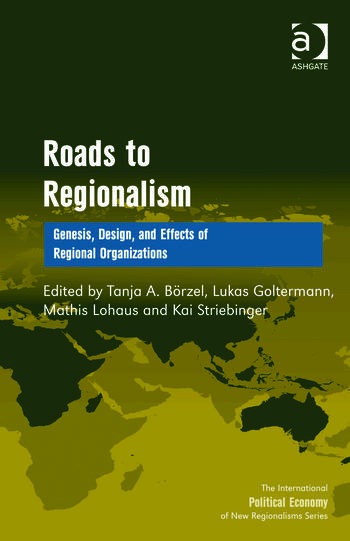Roads to Regionalism. Genesis, Design, and Effects of Regional Organizations.
Tanja A. Börzel, Lukas Goltermann, Mathis Lohaus, Kai Striebinger – 2012
Over the past few decades states all around the globe have intensified institutionalized cooperation at the regional level. To deepen our understanding of state-led regionalism, the authors use an analytical framework comprising four main strands. First, they describe and explain the genesis and growth of regional organizations. Second, they account for institutional design, looking at important similarities and differences. Third, they examine the interaction between organizations and member states in an attempt to reveal factors that shape the level of commitment to and compliance with regional initiatives. Finally, they consider the impact of regional organizations on their member states. They conclude by providing a foundation for future research on the dynamic development of regionalism.
Contents:
Foreword, Anja Jetschke
Part 1
Introduction: Roads to regionalism: concepts and cases, Lukas Goltermann, Mathis Lohaus, Alexander Spielau and Kai Striebinger.
Part 2
Genesis and Growth: Ephemeral regionalism: the proliferation of (failed) regional integration initiatives in post-Soviet Eurasia, Niklas Wirminghaus;
Joining the neighbors: the accessions to ASEAN in the 1990s, Niklas Aschhoff;
MERCOSUR: integration through presidents and paymasters, Felix Hummel and Mathis Lohaus.
Part 3
Institutional Design: Explaining the differences in the institutional design of ASEAN and NAFTA, Leon Kanthak;
Why did NAFTA and ASEAN set up dispute settlement procedures?, Annika Korte;
Institutional similarities between regional organizations: an analysis of ECOWAS and the Arab League, Constanze Koitzsch.
Part 4
Member States' Behavior: Does regime type matter? Regional integration from the nation states' perspectives in ECOWAS, Veronika Kirschner and Sören Stapel;
State capacity and compliance in ASEAN, Lukas Goltermann; When pigs fly: ECOWAS and the protection of constitutional order in events of coups d'état, Kai Striebinger.
Part 5
Effects on Member States: MERCOSUR's contribution to democratic consolidation, Christian Pirzer;
ASEAN and civil society: an incompatible relationship?, Corinna Krome;
Monetary integration through the backdoor: does NAFTA promote monetary policy harmonization in North America?, Alexander Spielau.
Part 6
Conclusion: Do all roads lead to regionalism?, Tanja A. Börzel.



